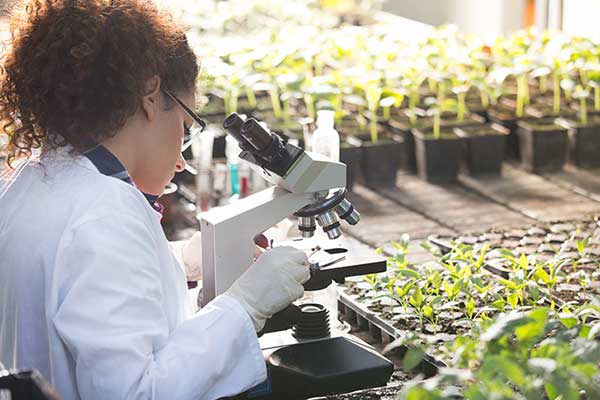7 Real-Life Applications of an Environmental Science Certificate
It’s no surprise that people often fail to see the things that are right in front of them, and a 2017 article in The New York Times entitled, “Why We Miss Objects That Are Right in Front of Us,” showed why. (If you have a moment, read the piece and see some of the surprising ways in which we fail to see what should be entirely obvious.) Common reasons include mismatches in the visual scale of objects, observer expectations, and (most importantly for this article) something called “inattentional blindness.” That last bit basically means that we tend to not notice unexpected things — and nowhere is that more true than when we fail to see the real-life applications of environmental science certificates.
In this article, we will detail some of the professional spheres where you’ll find certified environmental professionals at work and the positive ways in which they impact us all on a daily basis.

Environmental Planning and Consulting
Nowhere does the breadth and diversity of the environmental science field manifest itself better than in environmental planning and consulting. At first, you may think that this sector deals entirely with industrial applications such as manufacturing, hazardous waste removal, and oil and gas production. Not so! Companies that make consumer products have a vested interest in implementing environmentally friendly policies.
Why? Consider the case of cosmetics companies that want to minimize wasteful packaging and eliminate potentially toxic ingredients. Think about home-improvement retailers that want to make products that require fewer inputs and use less power. Bring to mind bedding companies that seek to reduce the presence of residual chemicals in their products. All of these and more base their business practices on the counsel of environmental professionals.
Local and Federal Environmental Law and Legislation
Businesses and individuals alike have to structure their day-to-day activities around environmental regulations laid down by both local and federal governments. From determining amount of carbon emissions from power plants and the types of underground storage tanks that businesses can use to how much water can get flushed down toilets and what common, high-efficiency appliances will cost, these mandates impact everyone. Fortunately, governmental organizations don’t pull such rules out of thin air. Professionals with environmental certifications balance the various associated costs to benefit both citizens and the world at large.
Impact Assessment, Monitoring, and Remediation
One of the many well-known environmental-certification applications involves the identification and restoration of disaster areas. While many conceptualize such disasters as big, self-evident catastrophes such as the 2010 Deepwater Horizon oil spill, others occur much more quietly. Consider how the dumping of methylmercury into the waterways of southwestern Japan occurred for decades, leading to the development of Minamata disease. Armed with environmental science knowledge and certifications, remediators identify and restore such sites.

Regulation Compliance and Enforcement
Even more important than cleaning up environmental disasters is preventing them before they have a chance to happen. This means taking the knowledge and metrics compiled by environmental professionals and applying them to real-life situations. What could some of those be? Well, regulatory enforcement efforts can focus on:
- Drinking water
- Air pollution
- Oceanic pollution
- Safety inspections of factories, oil rigs, and other industrial facilities
- Refuse disposal sites
- Commercial buildings that may contain hazardous materials such as asbestos
Research and Education
Of course, environmental certification applications can’t proceed without the proper knowledge to back them up. Action requires information —and that’s where environmental research and education efforts come into play. Credentialled environmental scientists find themselves working in laboratories that interact with all kinds of related data, sifting and sorting them, understanding and implementing. Thanks to this particular corner of environmental science, people know what’s safe to eat, drink, and apply. Manufacturers can know the best practices that safeguard air, water, and soil while still allowing them to turn a profit. And polluters can get brought to justice.
Writing, Communication, and Activism
The desire to see the world safeguarded and people protected propels many into the field of environmental science. It’s also one of the primary environmental certification applications! In this field, you’ll find people located at:
- Non-profit advocacy groups
- Governmental bureaus
- NGOs
- Academic journals
- Major news publications (e.g., The New York Times, NPR, The Economist)
- Major corporations
- State and local governments
As the largest non-governmental environmental accrediting organization in the United States, NREPSM is officially recognized by the United States Department of Energy (DOE) and Environmental Protection Agency (EPA). We also count 12,000 scientists and other professionals among our members. Contact us for more information about NREPSMSM and Environmental Science certificates.
